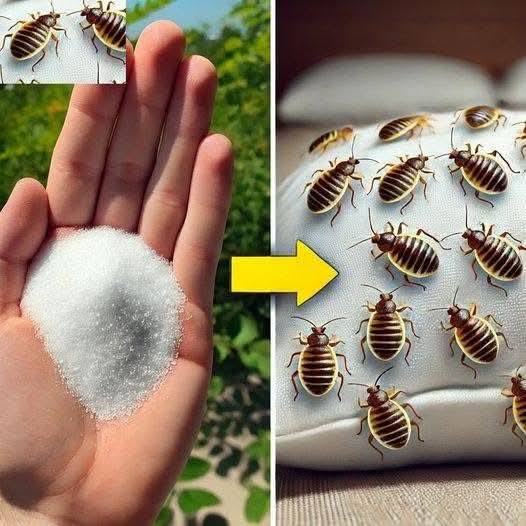ADVERTISEMENT
The 6 Most Effective Remedies Against Bed Bugs at Home
Bed bugs — the tiny, relentless pests that can turn peaceful nights into itchy, sleepless ones. Once they settle into your home, getting rid of them can feel like a battle. But don’t panic — with the right approach, you can reclaim your space. Here are the 6 most effective home remedies to get rid of bed bugs, naturally and affordably.
🛏️ 1. Diatomaceous Earth (DE) – The Natural Killer
This fine powder may look like nothing special, but it’s a powerful, all-natural insecticide.
- How it works: It dries out and kills bed bugs by damaging their exoskeletons.
- How to use: Lightly dust DE around your mattress seams, under furniture, baseboards, and any cracks or crevices. Leave it for a few days, then vacuum thoroughly.
- Bonus: It’s safe for pets and kids — just avoid breathing in the dust directly.
🌿 2. Essential Oils – Natural and Pleasantly Scented
Some essential oils are toxic to bed bugs and work as repellents.
- Top oils: Tea tree, lavender, peppermint, and eucalyptus.
- How to use: Mix 10–15 drops with water in a spray bottle and apply to bedding, mattresses, and room edges daily.
- Note: Essential oils are most effective as a preventative or in light infestations.
🔥 3. High Heat Treatment – A Bed Bug’s Worst Enemy
Bed bugs and their eggs can’t survive extreme heat.
- How to use: Wash all bedding, clothing, and washable fabrics in hot water (at least 120°F/49°C), then dry on high heat for 30+ minutes.
- You can also use a steam cleaner on mattresses, carpets, and furniture.
🧼 4. Vacuuming Thoroughly and Regularly
It sounds basic, but a powerful vacuum is your first line of defense.
- Focus on: Mattress seams, bed frames, cracks in walls/floors, upholstery, and baseboards.
- Important: Dispose of the vacuum bag or contents in a sealed bag immediately after each session.
🧊 5. Isolate & Freeze Infested Items
Bed bugs don’t just hate heat — they also can’t survive freezing temperatures.
- How to use: Place infested items in a sealed plastic bag and leave them in the freezer (0°F / -18°C or below) for at least 4 days.
